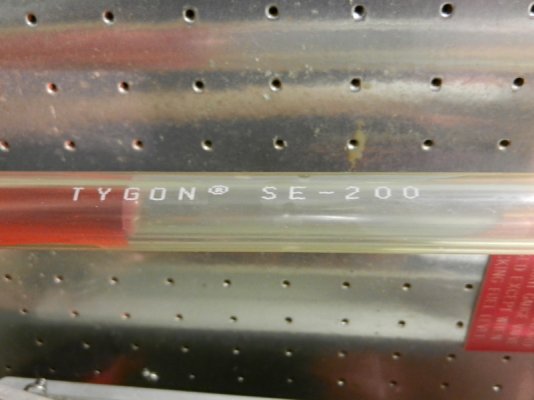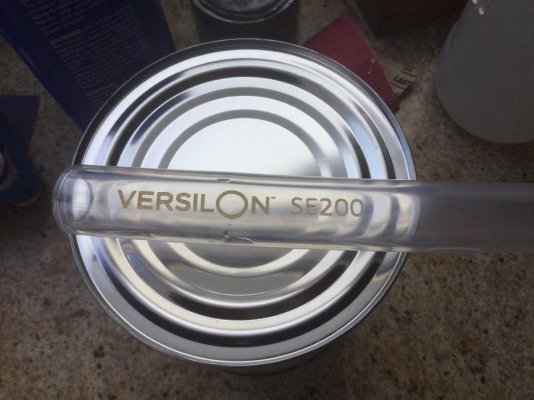Clear PVC is probably fine. Because it is so easy and cheap to replace, its likely not worth doing anything more. Even the "better" alternatives will still melt and spill fuel in a fire situation. But, if you're so inclined...
Below is what I have just installed. (I'm still fabricating the guards and indication markings, so they haven't even seen fuel yet.) Meet up with me in 15-20 years and I'll let you know if it was worth the effort :lol:
Tygon (and Versilon) are brand names that refer to a multitude of different tubing, all with different properties and not all rated for hydrocarbons.
What you want is one of them formulated for what you intend to put in it. I bought mine from McMaster-Carr, about $20 for two 2 FT pieces that made up both my sight gauges. They were one outfit where I could buy a reasonable length (less than a 50 ft roll.) The tubing is specifically rated for use with diesel fuel. Its basically the same clear PVC tubing you can get at a local store, but has a thin inner liner of another clear polymer that has the chemical resistance...In this case FET, which resists a lot of dang stuff.
Here's a pic of the material installed as my stbd side sight gauge (still waiting completion and installation of the guards and markings for level indication.)

Below are the details from the the McMaster-Carr website.
_________________________
Ultra-Chemical-Resistant Versilon PVC Tubing
Formulation: SE-200
Very Flexible
Compatible Tube Fittings: Barbed
Soft (Durometer 65A)
Temperature Range: -30° to 160° F
Formerly known as Tygon, this tubing is lined with FEP (fluorinated ethylene propylene) for better chemical resistance than PVC alone. Tubing is clear, so you can easily monitor flow.
___________________
Here's the part number and cost to ship to me in the PNW.
___________________
David Bowman placed this order.
Line Product Ordered Shipped Balance Price Total
1 6519T14
Ultra-Chemical-Resistant Versilon PVC Tubing 3/8" ID, 9/16" OD, 2 ft. Length 2
Each 2 0 9.64
Each 19.28
Merchandise 19.28
Sales Tax 2.44
Shipping 8.78
Total $30.50
Payment Received 10/12/18 (30.50)
Balance Due $0.00

 eBay and Amazon sell various sizes. When we replaced our fuel tanks we used Tygon.
eBay and Amazon sell various sizes. When we replaced our fuel tanks we used Tygon. 






